In the vibrant tapestry of Indian weddings, the Haldi ceremony is a prenuptial event that stands out for its deep cultural resonance and the burst of joy it brings. As a country steeped in traditions, India celebrates this occasion with a mixture of solemnity and revelry, painting each wedding with the bright hues of turmeric – known as ‘Haldi’ in Hindi. The significance of Haldi goes beyond mere aesthetics; it is intertwined with blessings, health, and the warmth of familial bonds, making it an indispensable spice of marriage life. This article delves into the integral role of Haldi in Indian customs, exploring its origins, symbolism, and the loving preparations that mark this auspicious ceremony.
The Roots of Haldi: Tracing Its Origins in Indian Culture
The tradition of the Haldi ceremony is as ancient as it is auspicious, deeply rooted in the Indian subcontinent. Haldi, a sacred spice, is said to have been an element of ceremonial importance since the Vedic era, around 5000 years ago. Its presence in rituals is well documented in ancient texts, suggesting its use in purification and blessing the couple before their sacred union. The practice has been handed down through generations, evolving yet retaining its core essence. The ritual involves applying a paste made from turmeric, sandalwood powder, and rose water—or sometimes, milk and herbs—onto the bride and groom’s skin.
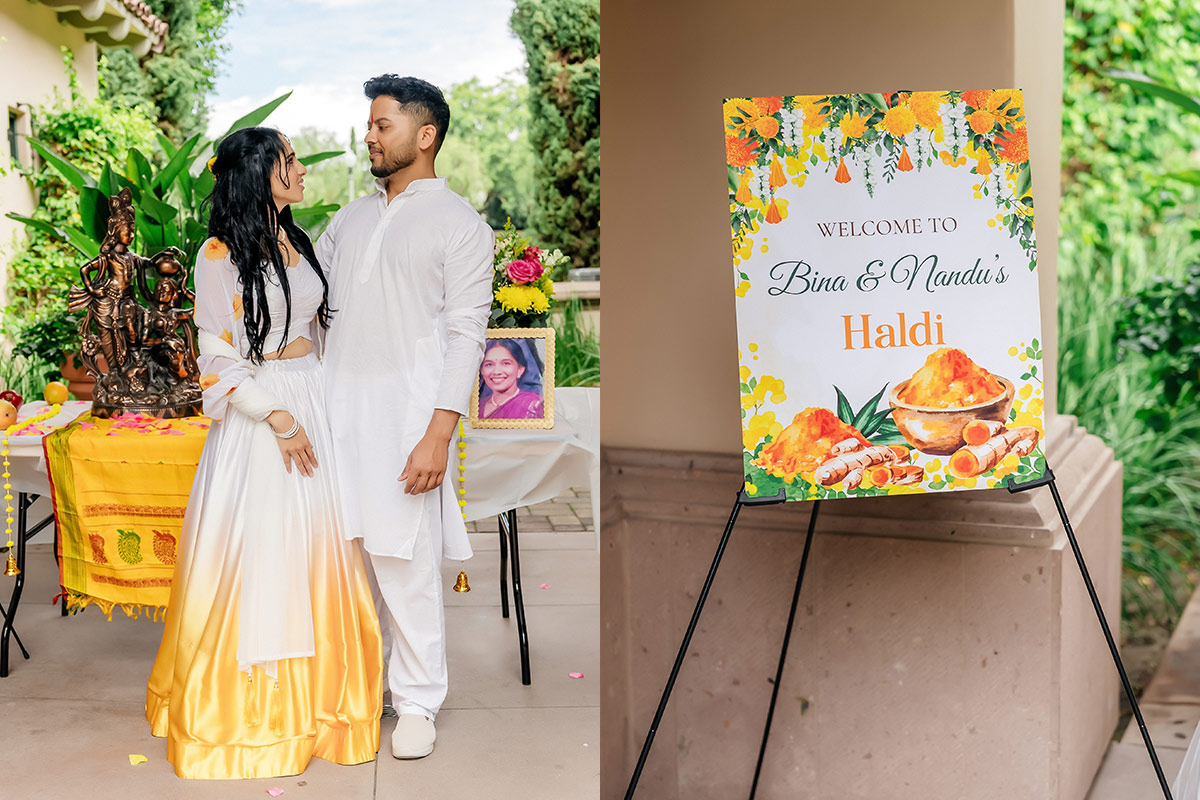
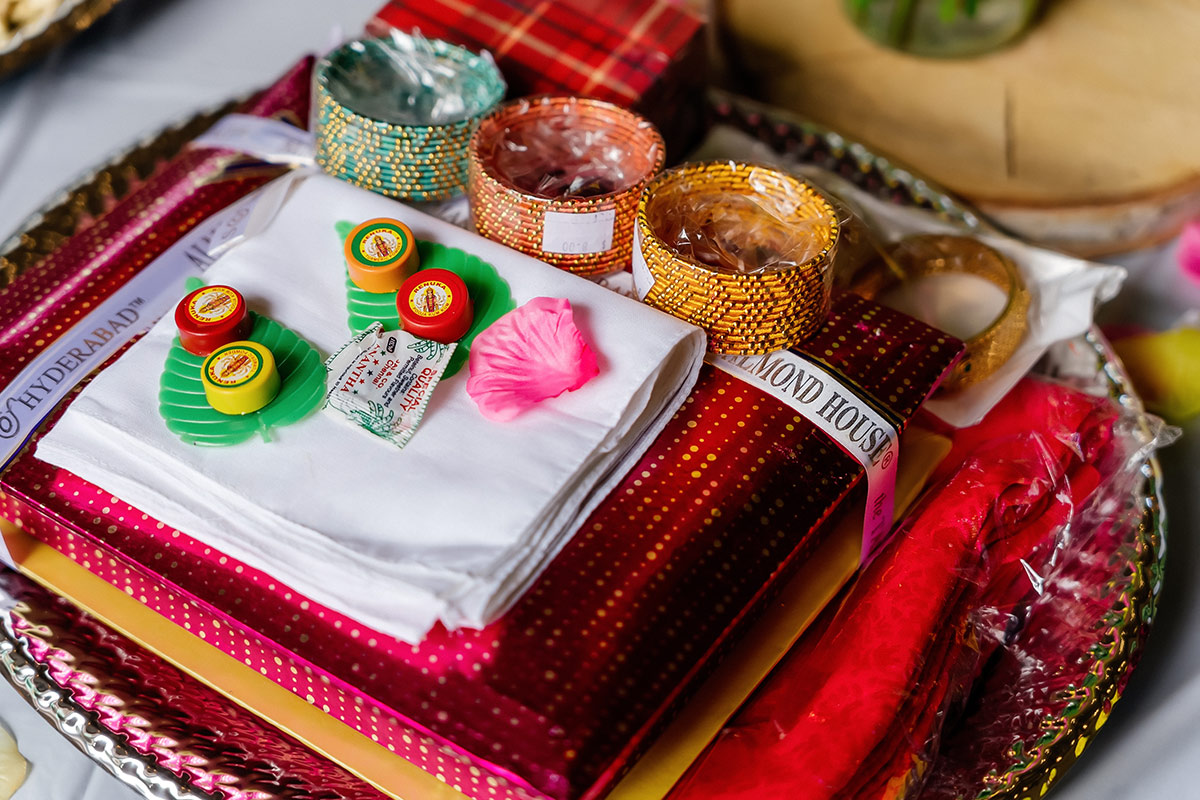
This ceremony is not just a ritual for beautification but is imbued with prayers for protection. Turmeric, with its antiseptic properties, is symbolic of bountiful health and prosperity. By incorporating this golden spice into the ceremony, elders impart their wishes for the couple’s long and healthy life together. Moreover, its vibrant color is believed to ward off evil spirits, safeguarding the couple’s happiness. Thus, the application of Haldi is a rite that encapsulates the community’s desires for the wellbeing of the betrothed.
Yellow Hues of Harmony: Understanding the Symbolism of Haldi
The color yellow holds a place of honor in Indian customs, symbolizing purity, fertility, and peace. During the Haldi ceremony, this color takes center stage, mirroring the dawn of a new beginning and the bright future that awaits the couple. It signifies the sacred fire that will witness the vows of marriage, kindling the flame of unity and love. The yellow color is also emblematic of the strength and resilience required in marital life, much like the robust nature of the turmeric root, which thrives against all odds.
In the Haldi ceremony, friends and family come together, each taking a turn to apply the paste on the couple, singing traditional songs, and often showering them with flowers and blessings. This act is more than a mere touch; it’s a transfer of the family’s warmth and affection, a moment of intimate connection. The ceremony fosters a sense of belonging and community, reinforcing social bonds before the wedding. It serves as a reminder that the couple’s union is a blending of families, a harmony of souls, and a collaboration of communities.
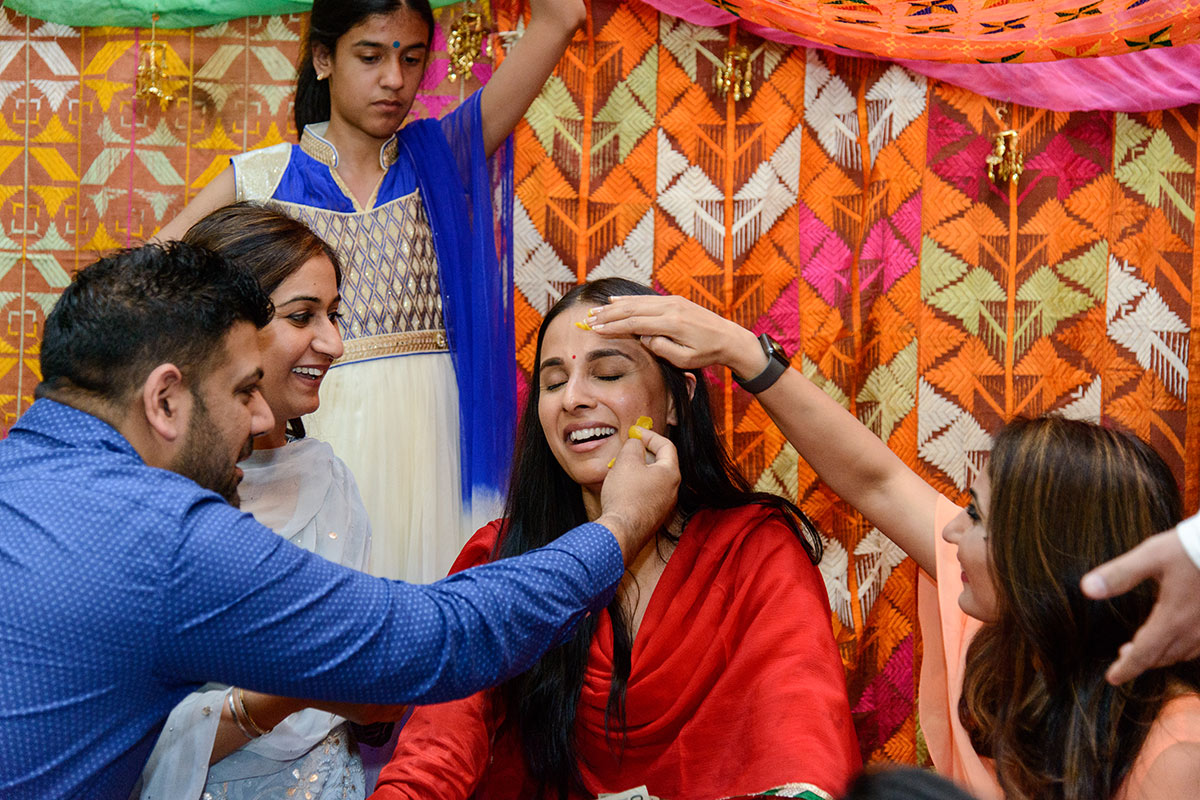

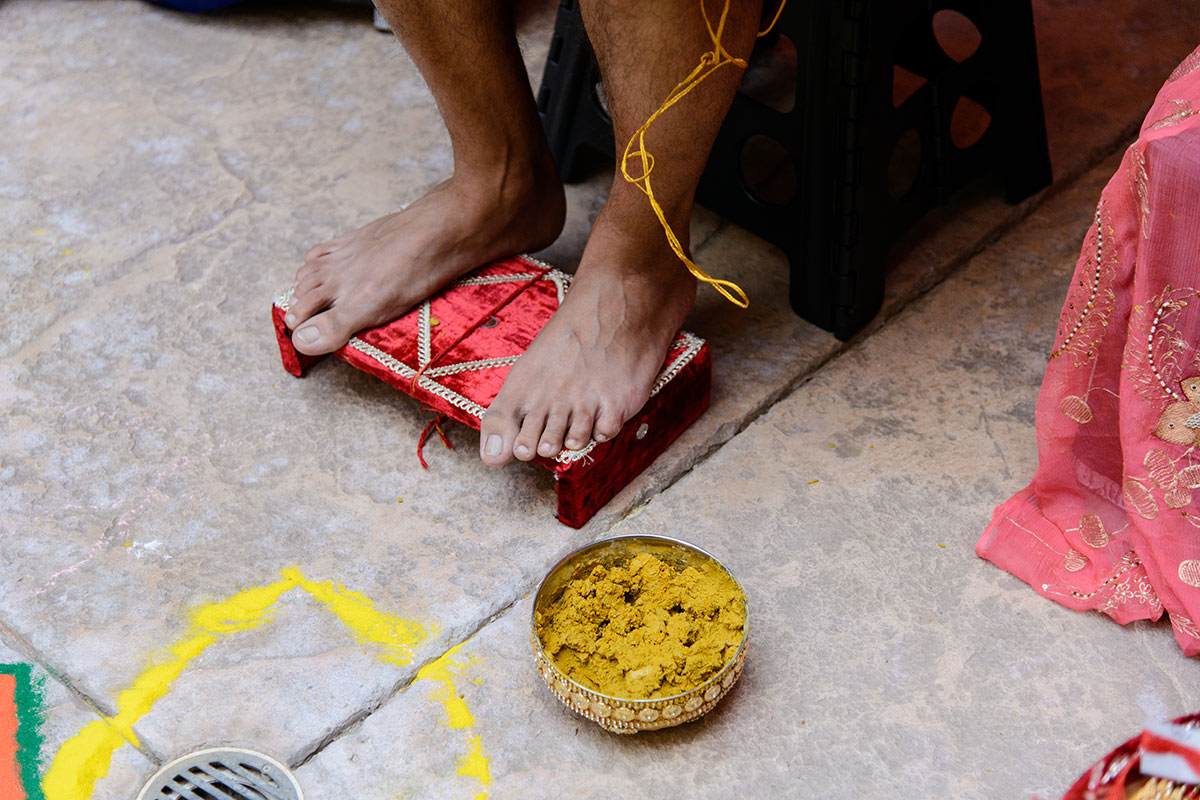
The Preparation: Crafting the Haldi Paste in Traditional Weddings
Close female relatives or sometimes the priest actively engage in preparing the Haldi paste, making it a ceremonial activity of its own. They undertake the Haldi paste’s preparation with deliberate care, selecting and combining ingredients with precise intentions. Grinding fresh turmeric roots serves a dual purpose: it unlocks the rich texture and fragrance while tapping into the root’s inherent strength. Often, this paste is enriched with aromatic oils, yogurt, and neem herbs to amplify its beautifying effects, bestowing upon the bride and groom an ethereal radiance. It is a common practice to source the ingredients from the family’s home, reflecting the domesticity and resourcefulness anticipated in the newlyweds’ life.
The communal event of preparing the Haldi paste bursts with laughter and shared stories. During this time, family members impart secrets of married life to the bride and infuse the mixture with blessings. In certain regions, people send the same paste used for the bride’s ceremony to the groom, symbolizing the deep yet unseen bond they are about to establish. This ritual preparation is a labor of love, manifesting the community’s support for the couple’s upcoming shared journey.
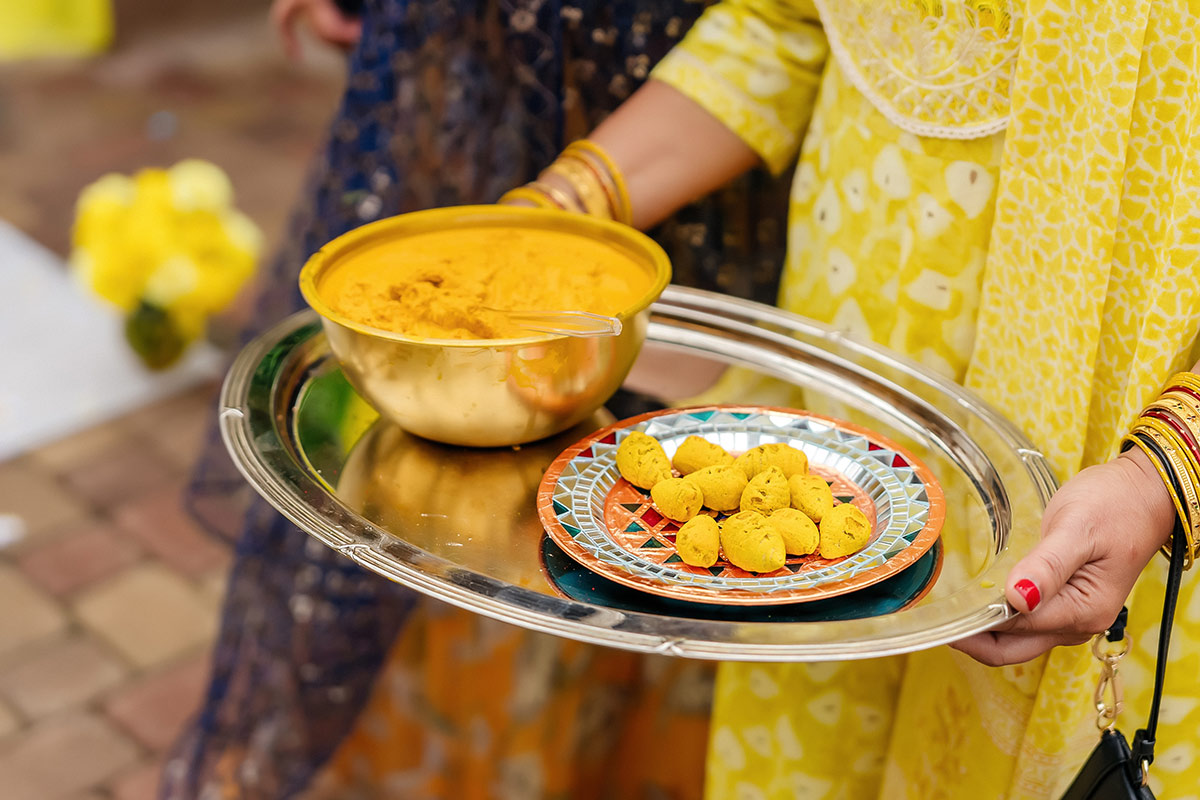
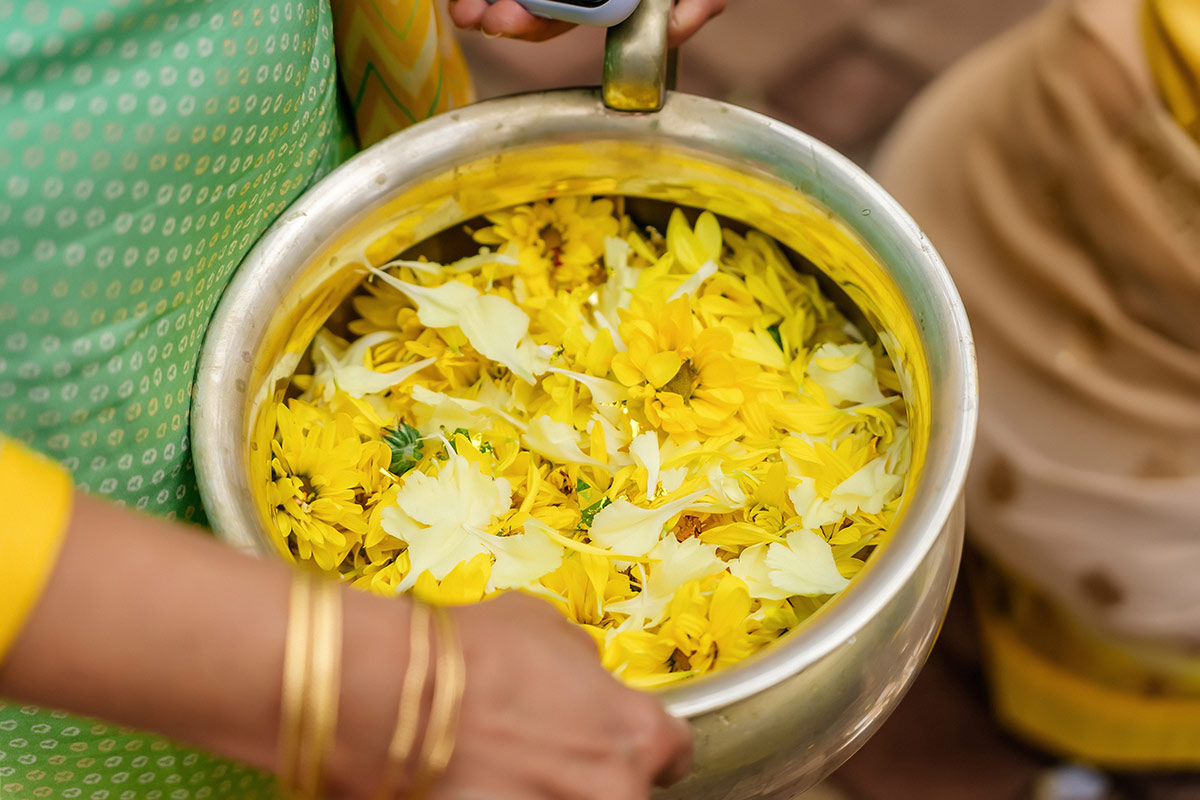
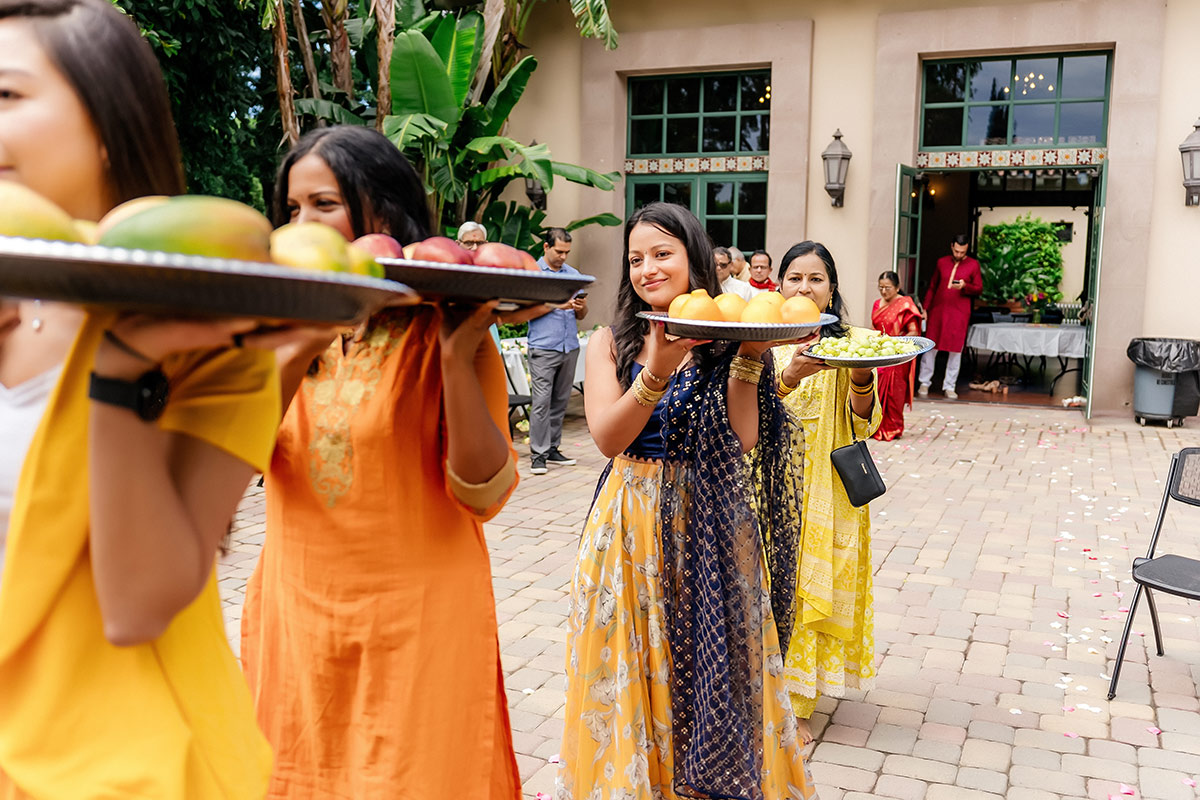
The Haldi ceremony, with its rich symbolism, continues to be an essential thread in the fabric of Indian weddings. As the Haldi paste adorns the couple, it does more than just brighten their skin; it colors their new life with the promises of purity, prosperity, and happiness.
A Family Affair: The Participation of Relatives in the Haldi Ceremony
The Haldi ceremony is not just a pre-wedding ritual; it is a collective expression of familial love and support. The act of applying Haldi is traditionally reserved for members who are happily married, as a means of passing on their good fortune and marital bliss to the bride and groom. The involvement of relatives in this ceremony is multifaceted. They play the dual role of caretakers and celebrants, ensuring that the ritual not only proceeds smoothly but is also imbued with joy and festivity. This is a moment of inclusivity where cousins, siblings, uncles, and aunts gather, each waiting for their turn to anoint the couple with the sacred paste.
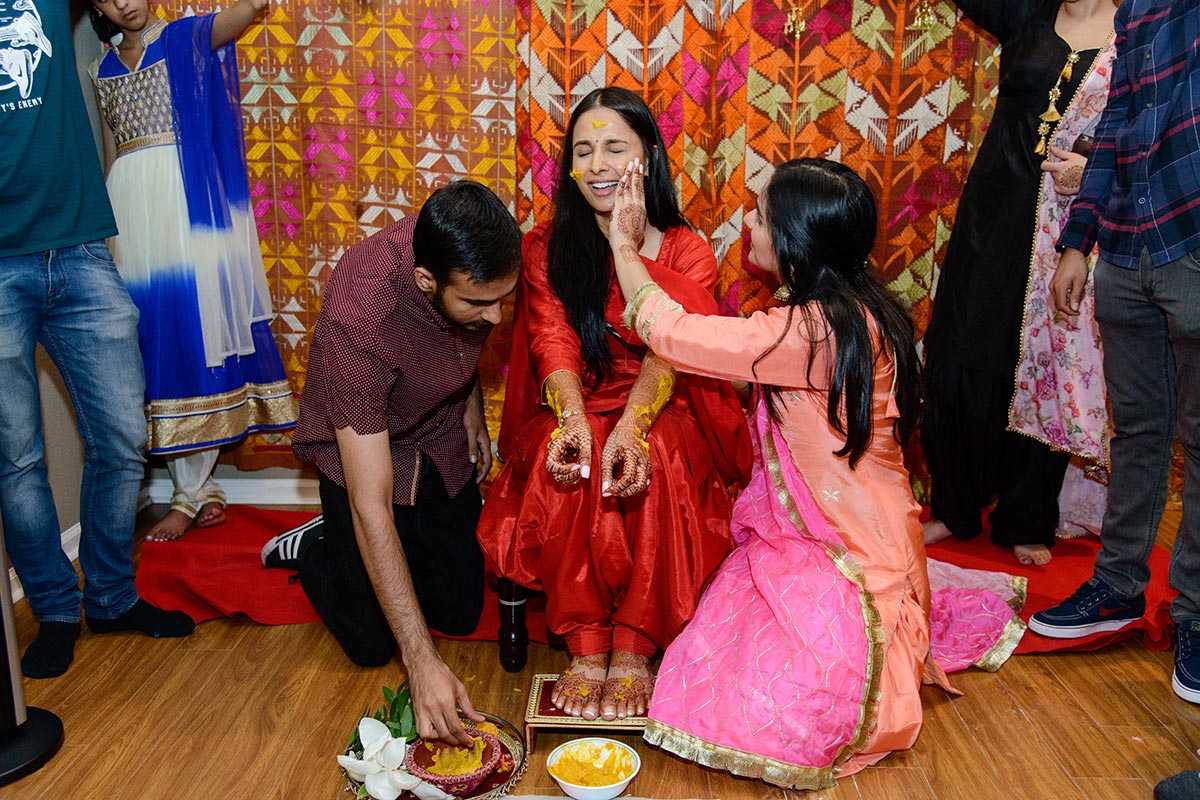
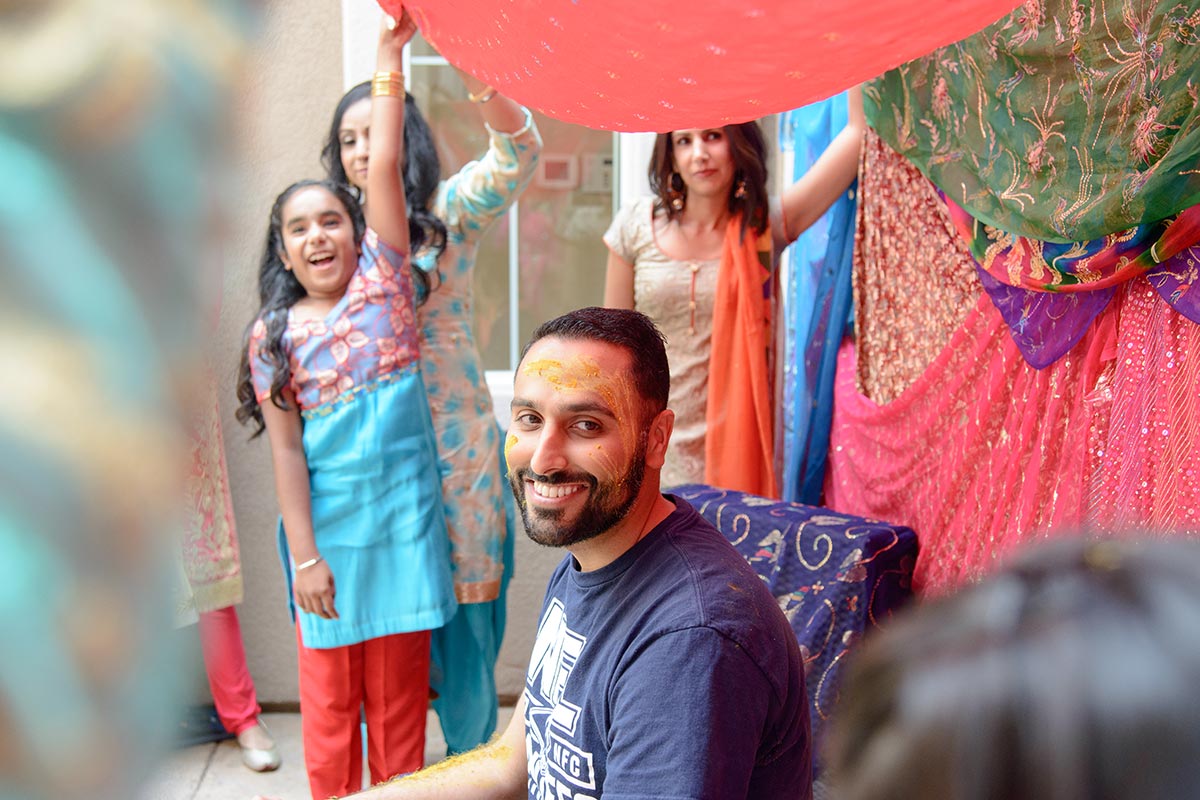
The relatives also take this opportunity to share anecdotes and wisdom about married life, sometimes teasing the couple in a light-hearted manner, fostering a relaxed environment that helps alleviate pre-wedding jitters. Children often join in, smearing Haldi with tiny fingers, adding to the playfulness of the event. Through such interactions, the ceremony serves as a reminder that the couple’s union will strengthen the bonds within the family tree and that their support network in married life extends far beyond each other. It underscores the Indian ethos that a marriage is not merely a bond between two individuals but a tapestry woven by many hands, representing the collective aspirations and blessings of an entire clan.
Bridal Beauty: How Haldi Enhances the Wedding Glow
The unparalleled aesthetic importance of Haldi for bridal beauty stands out sharply. People hail it as nature’s beauty balm, reputed for bestowing radiant, glowing skin on the bride for her wedding day. Applying the turmeric paste exfoliates and clarifies, enhancing the bride’s vibrant and photogenic qualities. Essentially, it ranks among the oldest beauty treatments in Indian culture, readying the bride to look her finest as she embarks on a new life chapter. Traditional beauty rituals often accompany this practice, with songs and chants that purportedly calm the spirit, letting the bride embrace the energy and intention of each word.
However, applying Haldi transcends mere beautification; it symbolizes the bride’s transformation from maidenhood to matrimony. The paste’s yellow hue signifies her readiness to embrace new roles and responsibilities. Furthermore, with her loved ones applying the paste, it becomes a sign of the family’s united efforts to nurture and ready her for this life change. This ritual adorns the bride both aesthetically and symbolically, cloaking her in her family’s blessings as she takes center stage on her wedding day.
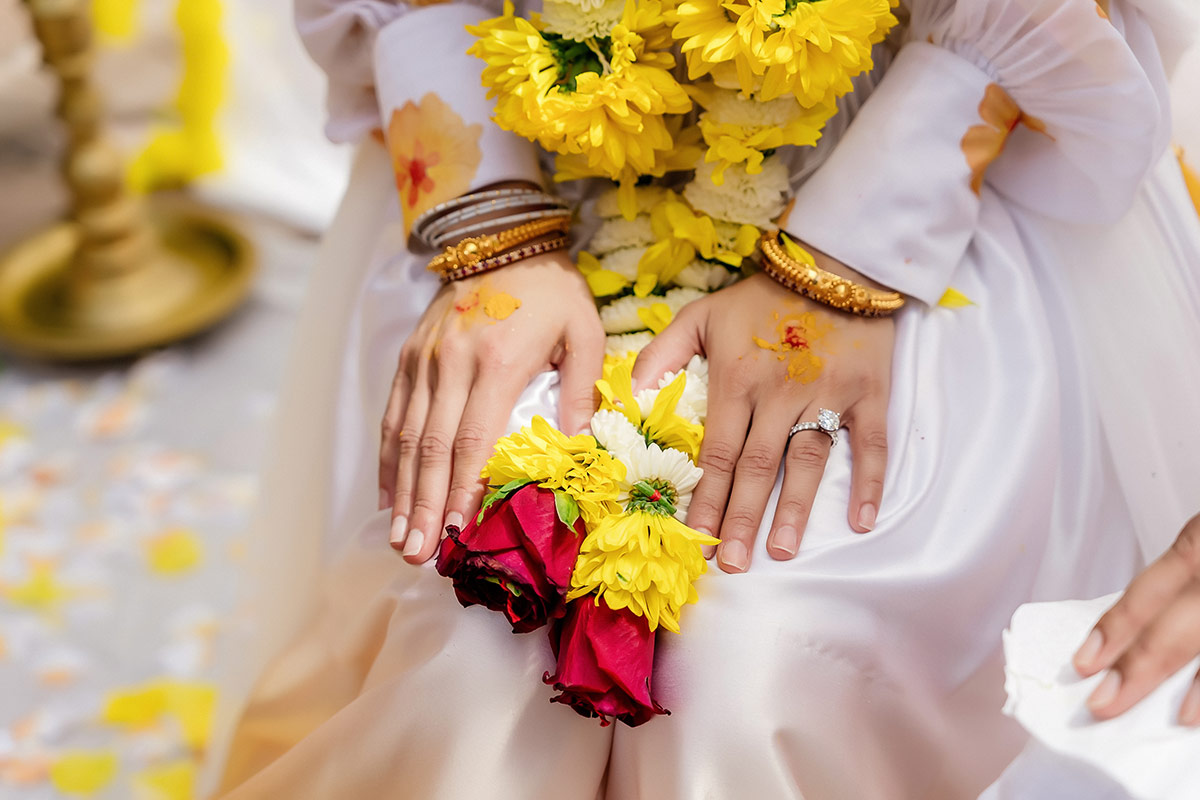
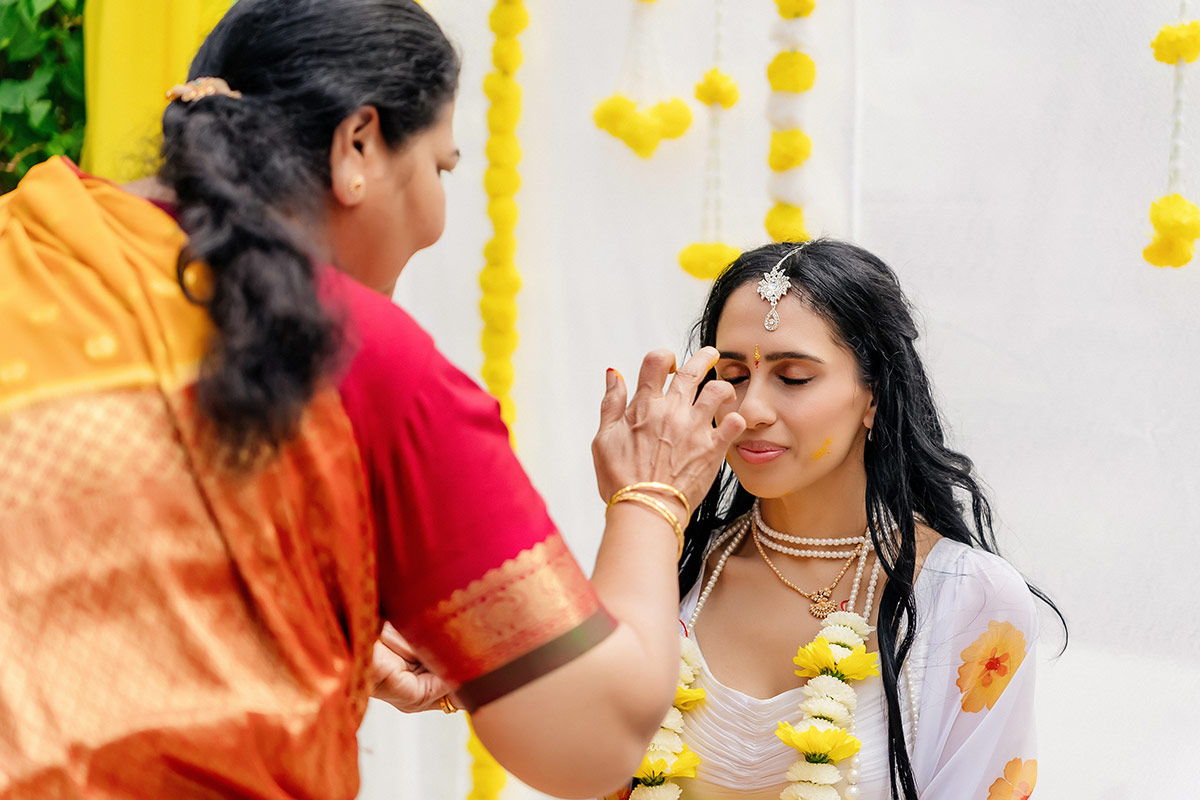
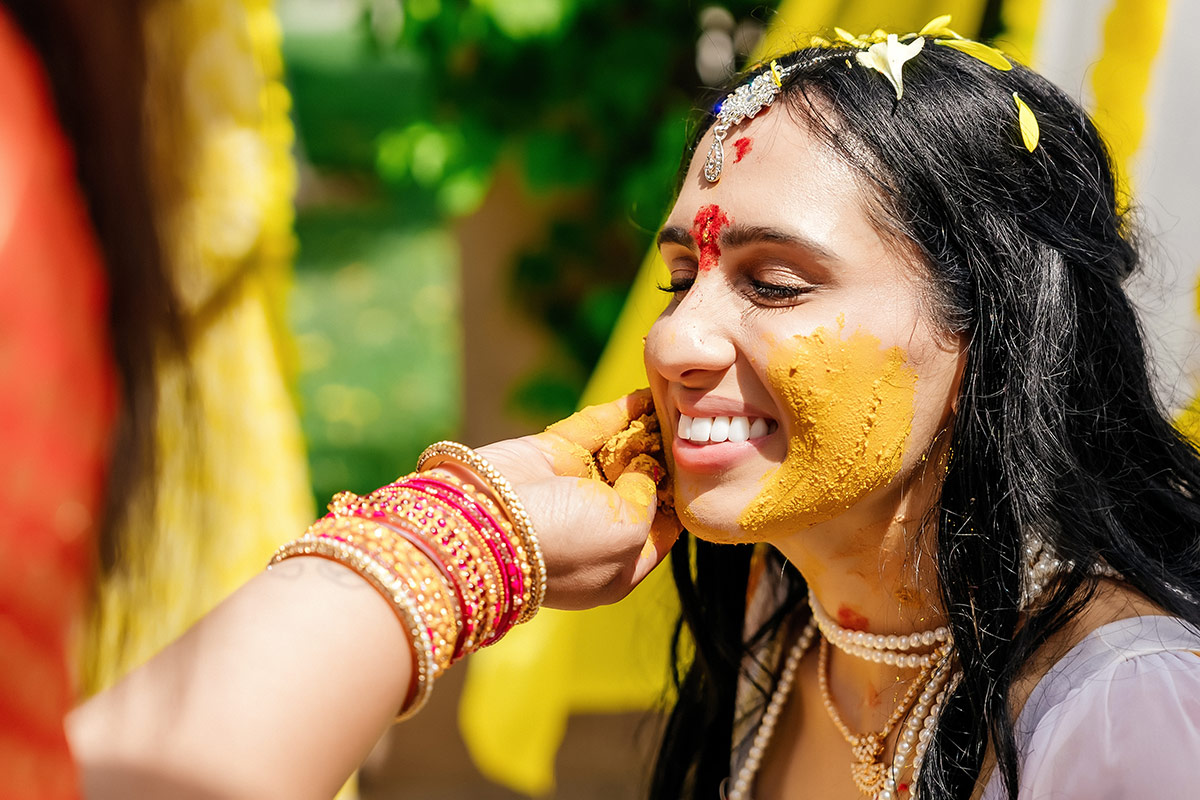
Health Meets Tradition: The Medicinal Benefits of Turmeric in Haldi
The Haldi ceremony profoundly embodies the adage “let food be thy medicine,” with turmeric as its central element. For thousands of years, Ayurvedic medicine has held this powerful herb in high esteem for its anti-inflammatory and antibacterial properties. Believers say that applying turmeric to the skin guards against blemishes and ailments, an especially favorable sign for the wedding day, when the bride and groom need to look and feel their best. Thus, the ceremony serves as a holistic health practice, preparing the body and spirit for the demanding schedule of Indian wedding festivities.
Moreover, people believe turmeric’s antiseptic properties protect the couple from any ill health before their wedding. This protective feature of the Haldi ceremony stands as a tribute to the ancient understanding of the link between health and well-being. Amid the excitement of the wedding, it’s easy to ignore the stress and fatigue that such a significant event often brings. The Haldi ritual, focused on healing, ensures that the couple receives not only pampering but also thorough preparation in body and soul for the profound journey they will soon embark upon. This ceremony interweaves the age-old wisdom of Ayurveda with the fabric of marital traditions, highlighting the lasting influence of Indian customs in fostering health and joy.
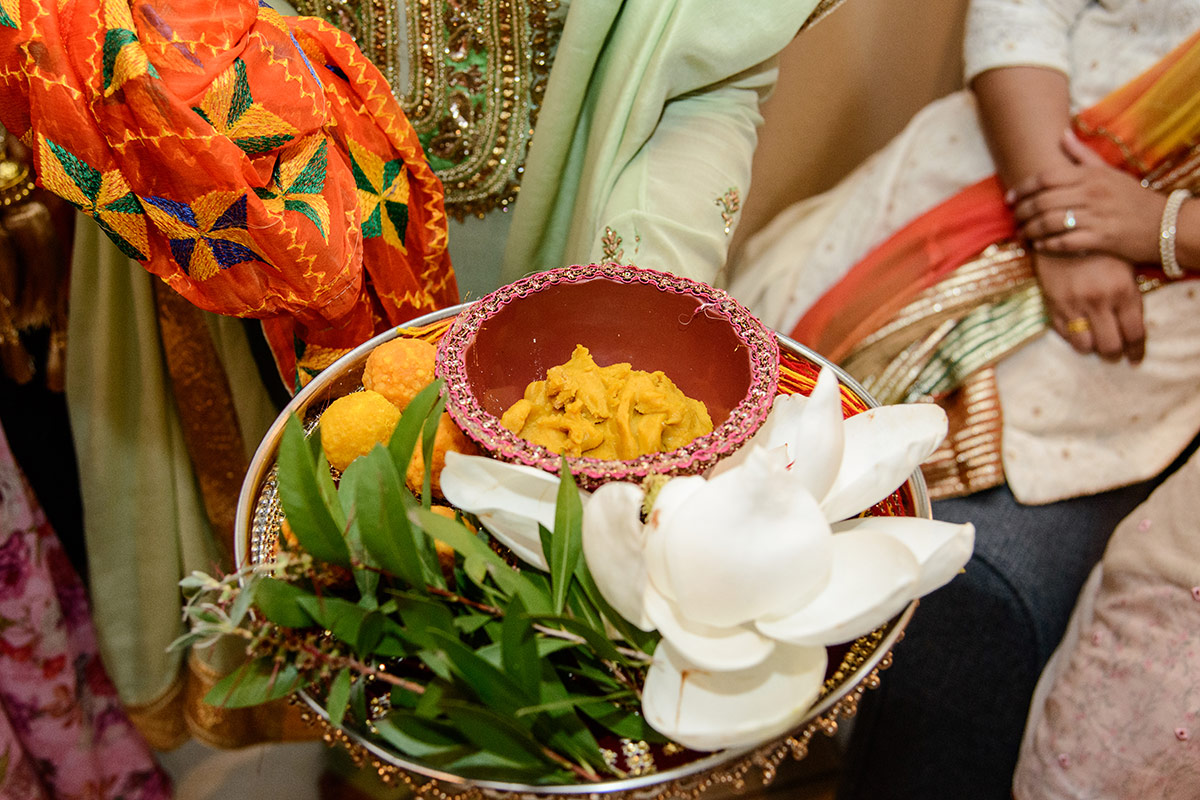
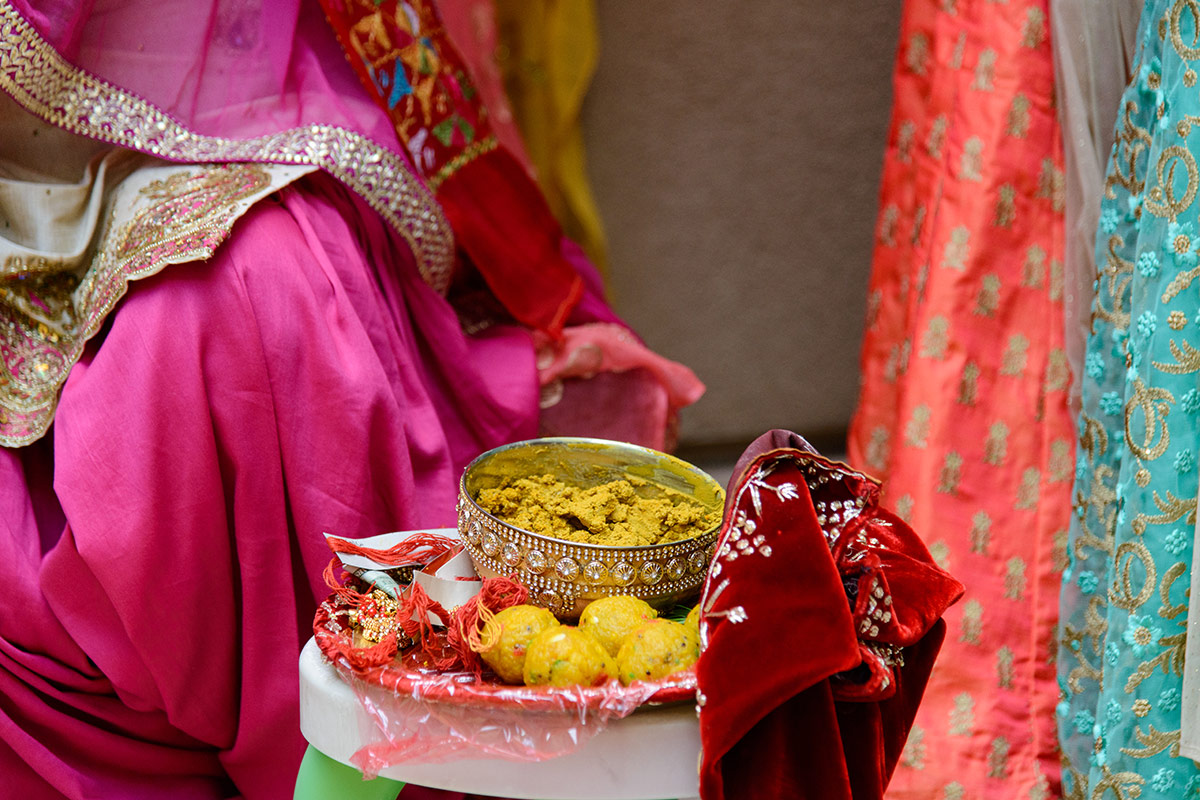
Laughter and Rituals: The Festive Atmosphere of the Haldi Event
The Haldi ceremony, typically taking place a day before the wedding, transcends a mere ritual; it’s a festivity brimming with laughter, music, and dance. Joy saturates the air, accompanied by the vibrant beats of dholaks and unrestrained laughter. This event casts a unique spell, transforming pre-wedding anxiety into sheer excitement. Elders laugh as they smear Haldi on those about to wed, often cracking jokes and playfully applying the paste far beyond the intended areas, while the younger family members tease the couple about their imminent marriage. Each application of Haldi brings not just color, but also a generous helping of joy and lighthearted teasing.
Women of the household add to the fun, performing traditional songs and dances that often contain a teasing element, marking the couple’s final day as unmarried individuals. The ceremony creates a space where formalities take a back seat, allowing everyone to fully engage in the joy of the moment. Relatives might put on impromptu performances or engage in dance battles, and at times, they initiate a playful tug-of-war with songs that humorously contrast the bride’s family with the groom’s. This joyous atmosphere plays a critical role, nurturing a sense of unity and friendship between the two families soon to be connected by marriage.
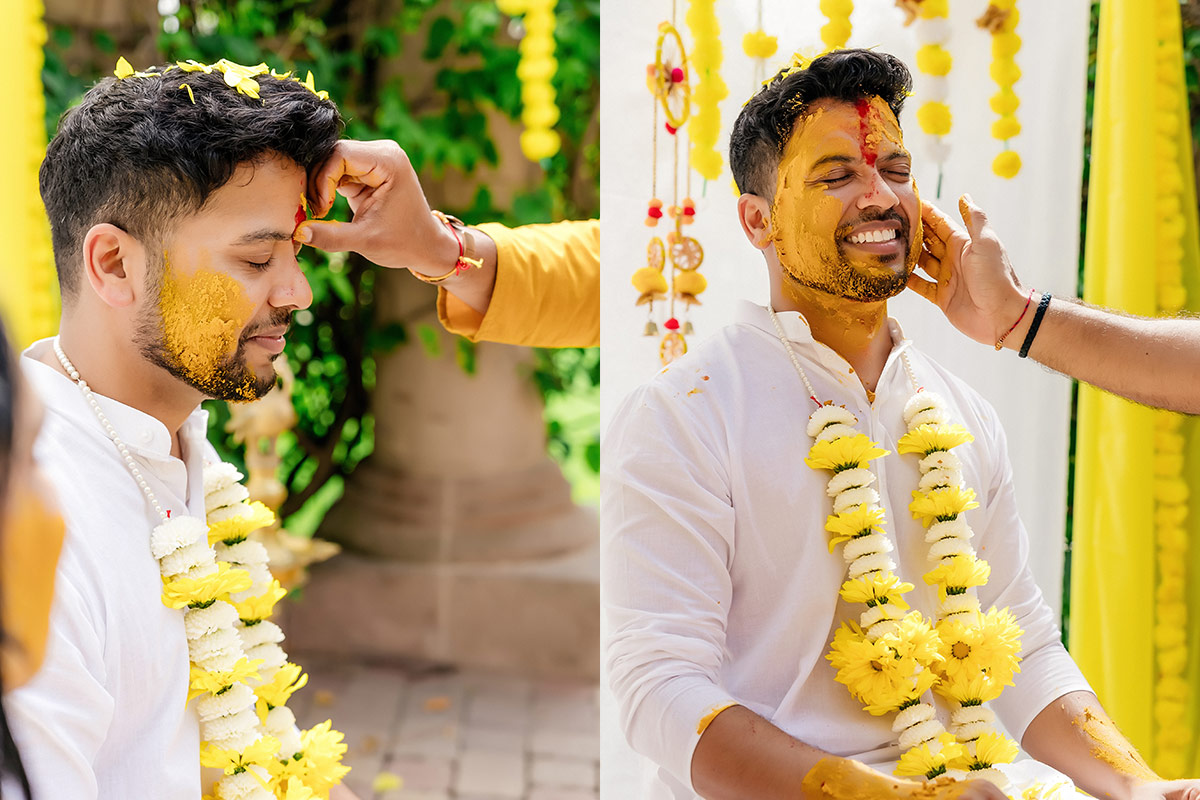
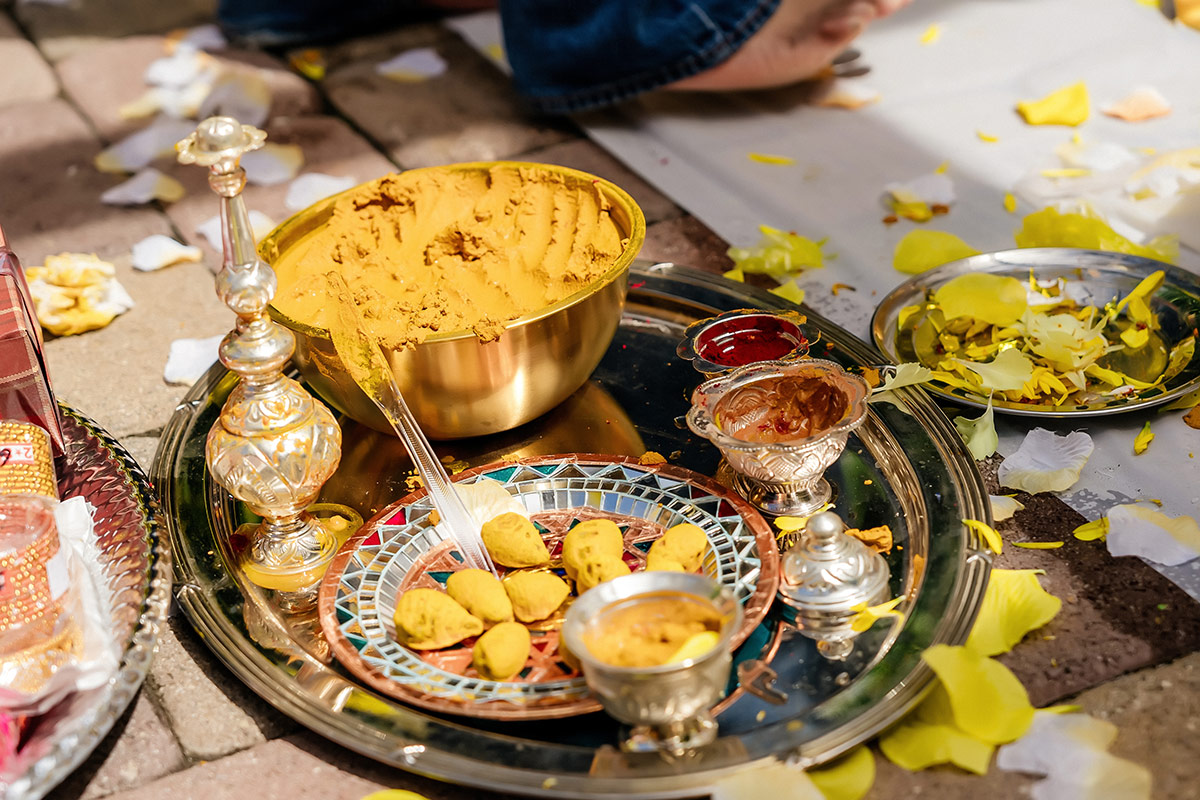
Post-Haldi Celebrations: Transitioning to the Main Wedding Event
Once families wash off the Haldi, symbolizing the body and soul’s purification, the transition to the main wedding event starts. The mood shifts noticeably as the Haldi’s light-heartedness makes room for the wedding’s solemnity and splendor. In many cultures, this removal of Haldi signals the bride and groom’s readiness to start their sacred journey together. A feeling of eager anticipation fills the air as families move from the Haldi’s casual intimacy to the formal ceremonies that will unite the couple in matrimony.
The time following the Haldi often serves as a period of reflection when the imminent changes become real. Families come together to put the finishing touches on the last preparations, taking care to perfect every detail. Traditionally, this period keeps the bride and groom apart, intensifying the emotional impact of their reunion at the wedding altar. This stark contrast between the Haldi’s joyful freedom and the wedding’s structured protocols underscores the diverse nature of Indian matrimonial celebrations — a spectrum ranging from spontaneous happiness to the dignified enactment of ancient customs.
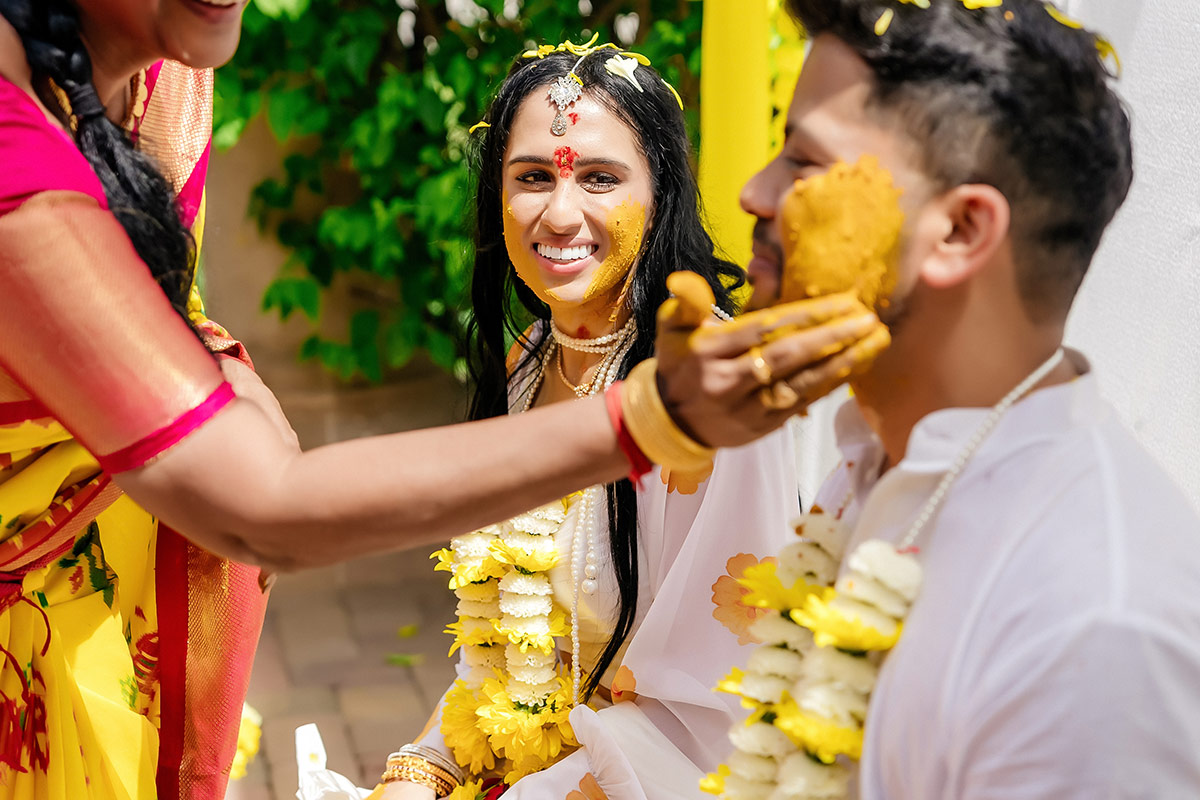
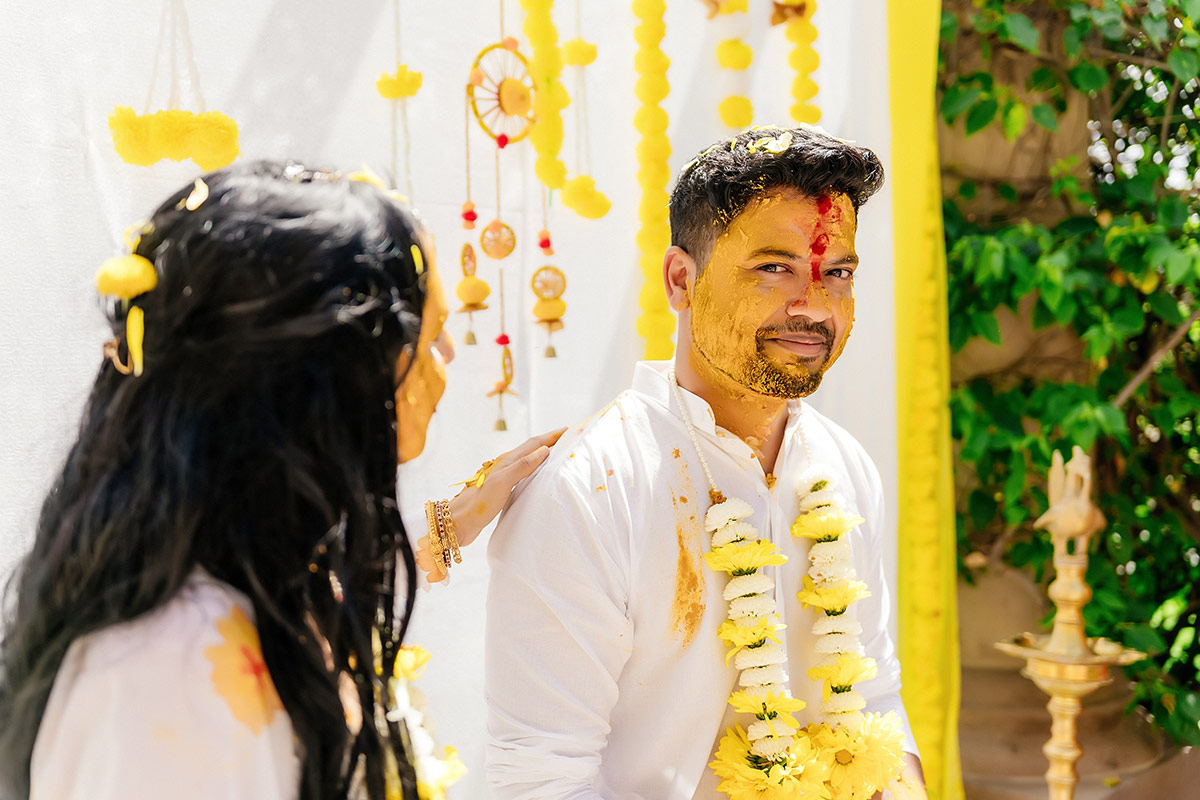

In conclusion, the Haldi ceremony vibrantly reflects the complexity of Indian weddings. It captures the contagious laughter and community joy, bridges the gap between pre-wedding celebrations and the seriousness of exchanging marriage vows, and illustrates how ancient traditions blend smoothly with modern life. As relatives apply the Haldi, they do more than mark the skin with turmeric; they bestow their blessings and good wishes on the couple. The humor and practices enveloping this event are just as essential to an Indian wedding as the ceremony itself, filling the event with warmth and togetherness.
